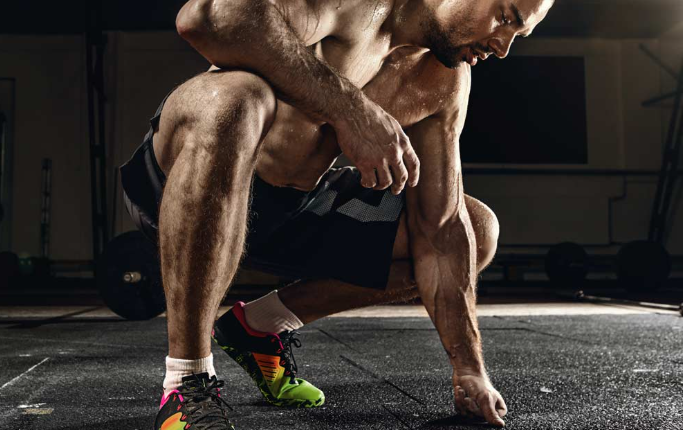Whether you are an aspiring athlete or a weekend warrior, your training plan is the cornerstone of performance and injury prevention. However, even the most motivated individuals can fall into patterns that hinder progress and increase the risk of injury. From overtraining to poor recovery habits, training mistakes in sports can derail your goals if not addressed early.
In this article, we’ll explore some of the most common sportive training mistakes that athletes make and offer practical tips on training safely for long-term success.
- Skipping the Warm-Up
Many athletes, especially beginners, underestimate the importance of warming up. Jumping straight into intense workouts without preparing the body is one of the top fitness training mistakes.
Why it matters:
A proper warm-up gradually increases your heart rate, improves blood flow to muscles, and primes your joints and nervous system. This not only enhances performance but also aids in sports injury prevention.
How to fix it:
Start each session with at least 5–10 minutes of dynamic stretching and light aerobic activity. Focus on movements that mimic your sport or workout.
- Poor Form and Technique
Form and technique are crucial when lifting weights, running, or playing a team sport. Improper posture or motion can strain joints and muscles, increasing the risk of injury.
Why it matters:
Bad form leads to muscle imbalances and joint stress and can limit athletic potential. It’s one of the most overlooked workout errors to avoid.
How to fix it:
Consult a coach or trainer to review your technique. Refine your movements using mirrors, video recordings, or expert feedback.
- Overtraining Without Adequate Rest
Ambition is great, but too much training without proper recovery can lead to burnout or injuries. Overtraining syndrome is common among athletes who ignore their bodies’ need to heal and rebuild.
Read Blog :- Motivational Quotes from Leading Athletes: Fuel Your Drive to Succeed
Why it matters:
Muscles grow during rest, not during workouts. Overtraining can lead to fatigue, reduced performance, sleep issues, and even immune suppression.

How to fix it:
Schedule regular rest days and sleep at least 7–9 hours per night. Use active recovery techniques like light stretching, foam rolling, or low-intensity exercises.
- Inconsistent Training Routines
Another major training mistake in sports is inconsistency. Sporadic workouts make building endurance, strength, or skiing difficult, especially for competitive sports.
Why it matters:
Athletic improvement relies on consistent, progressive training. Skipping sessions or lacking a structured plan limits your progress and increases injury risk.
How to fix it:
Create a structured training schedule and stick to it. Use a calendar or digital fitness app to track workouts and ensure regularity.
- Ignoring Flexibility and Mobility Work
Many athletes focus on strength and endurance but forget the importance of mobility and flexibility, vital for movement efficiency and injury reduction.
Why it matters:
Tight muscles and joints reduce your range of motion, impair coordination, and increase the risk of strain or tear.
How to fix it:
Include your weekly plan, which includes stretching sessions, yoga, or mobility drills in your attention to commonly tight areas like hamstrings, hips, shoulders, and calves.
- Improper Nutrition and Hydration
Fueling your body correctly is just as important as your workout itself. Nutritional mistakes can slow down recovery, reduce energy, and increase the chance of fatigue-related injuries.
Why it matters:
Your body needs adequate protein, carbohydrates, healthy fats, and fluids to repair tissue, maintain performance, and stay energized.
How to fix it:
Eat balanced meals before and after workouts. Stay hydrated with water or electrolyte drinks, especially during long or intense training.
- Neglecting Mental Health and Mindset
Physical training gets the spotlight, but mental resilience plays a huge role in sports performance. Stress, anxiety, or burnout can affect focus and motivation.

Why it matters:
A poor mindset can lead to inconsistent performance, poor decision-making, and even withdrawal from training altogether.
Read Blog :- Healthy Meals: Nutrition for Athletes That Fuels Peak Performance
How to fix it:
Incorporate mindfulness, breathing techniques, or mental coaching into your regimen. If necessary, consult a sports psychologist.
- Training Through Pain or Discomfort
There’s a fine line between pushing your limits and pushing through injury. Ignoring pain is a dangerous athlete mistake that can turn minor issues into long-term problems.
Why it matters:
Pain is a warning signal. Training through it can lead to chronic injuries like tendonitis, stress fractures, or ligament damage.
How to fix it:
Listen to your body. Stop training if you feel sharp or persistent pain, and seek professional advice for diagnosis and rehab.
- Focusing Too Much on One Type of Training
Many athletes fall into the trap of only doing cardio or strength training, depending on their sport. However, a well-rounded approach prevents imbalances and enhances overall performance.
Why it matters:
Cross-training can improve endurance, coordination, and strength while reducing the risk of repetitive strain injuries.
How to fix it:
Mix aerobic, anaerobic, resistance, and mobility training throughout your week. Include sport-specific drills for balanced development.
- Not Tracking Progress or Setting Goals
Knowing if your training is working is difficult without clear goals and measurable progress. This can lead to frustration and ineffective sessions.
Why it matters:
Tracking helps you identify what’s working and what’s not. It provides motivation and helps prevent plateaus.
How to fix it:
Set SMART (Specific, Measurable, Achievable, Relevant, Time-bound) goals. Evaluate progress using training logs, fitness apps, or performance tests.
How to Train Safely and Avoid Common Athlete Mistakes
To train safely, athletes must take a holistic and disciplined approach to their routine. That means understanding their body’s needs, respecting their limits, and prioritizing long-term health over short-term gains.
Safe Training Checklist:
- Warm up before every session
- Focus on proper form
- Rest at least 1–2 days per week
- Stay hydrated and eat well
- Include mobility and stretching
- Listen to your body—don’t ignore pain
- Vary your training methods
- Set and track measurable goals
Read Blog :- Top 10 Protein Supplements for Athletes: Fueling Performance
Conclusion
Training hard is important, but it also keeps you in the game. By avoiding these common sports training mistakes, you improve your performance and significantly reduce your risk of injury. Whether you’re a beginner or a seasoned pro, it’s never too late to reassess your routine, refine your approach, and adopt safer training practices.
Remember, progress in sports is a marathon, not a sprint. Build your foundation wisely, and your peak performance will follow.
FAQs: Training Mistakes in Sports
Q1. What are the most common training mistakes athletes make?
Common mistakes include skipping warm-ups, poor technique, overtraining, inconsistent schedules, and neglecting flexibility and nutrition.
Q2. How can I prevent injuries during training?
Focus on proper form, warm up before workouts, allow for adequate rest, cross-train, and avoid pushing through pain.
Q3. Is it okay to train every day?
Not always. Your body needs rest to repair and grow. At least 1–2 rest days per week are recommended, depending on the intensity of your training.
Q4. How important is hydration during training?
This is very important. Dehydration can impair performance, slow recovery, and increase injury risk. Always drink water before, during, and after workouts.
Q5. What’s the best way to correct poor workout form?
Work with a qualified coach or use video feedback to analyze and improve your movements. Consistency and focus are key.
Q6. Can mental health affect physical performance in sports?
Absolutely. Stress, anxiety, and poor focus can lower performance and motivation. Mental training is just as vital as physical training.
Q7. Why is flexibility often overlooked in training?
Many athletes prioritize strength and endurance, forgetting that flexibility is essential for preventing injuries and improving movement efficiency.
Q8. How do I know if I’m overtraining?
Signs include fatigue, sleep disturbances, irritability, poor performance, and lingering soreness. If you notice these, take a break or reduce training intensity.
Q9. What is the role of goal-setting in athletic training?
Setting specific and measurable goals keeps you motivated, tracks progress, and helps structure your training effectively.
Q10. Are supplements necessary to avoid training mistakes?
Supplements can help fill nutritional gaps but are not a substitute for a balanced diet. Always consult a healthcare professional before taking any.
